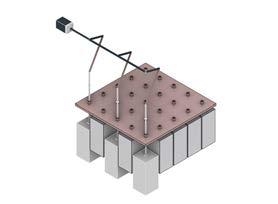David and the Vegetable Factory
BT-Bundle |2020
A Two-stage Optimization Model for Generating a Vegetable Factory’s Facility Layout Using the Gradient Descent Approach In this thesis a two-stage model is proposed, combining the idea of a two-stage model from the literature with a gradient descent approach, in order to solve the facility layout problem for problems consisting of 8 and 12 departments . The main research question of this thesis is: “How to computationally generate a layout of a vegetable processing factory given a program of requirements and flows between facilities as a matrix using a mathematical approach, minimizing the travel distance of goods needed for a product to be manufactured?” This method was chosen after analyzing the criteria for a vegetable processing factory and combining this with a literature research to previous methods applied to solve these “facility layout problems”. The gradient descent approach uses the partial derivatives of a multi-variable objective, the flowcost, in order to get a vector which is the direction of greatest descent. Computing this vector for all departments and then
moving them creates an iterative improving loop. In addition to the gradient descent approach a swapping procedure and a shooting procedure is introduced in order to reduce the effect of random starting position. From the result of the first-stage model, relative location constraints are extracted to be used in the second-stage model, a linear constraint programming solver capable of running optimizations by google or-tools to greatly reduce the solution space. The proposed method was tested on two toy-problems from the literature and compared to results existing in literature. Additionally, the effect of including a first-stage model was tested as well. When looking directly at the results, the proposed method is consistent and shows good results. Especially the inclusion of the first-stage model helps finding better solutions. Compared to other results found in the literature, the method shows slightly less good results based purely on the objective value. However, the final layouts found in this thesis are more compact.
Left: The most optimal layout for the first-stage model for respectively the 8 and 12 department problem Right: The final layout from the second-stage model conceived by implementing the topology found in the first-stage model
Name Graduation year Tutors
David den Ouden 2020 Pirouz Nourian & Petra Heijnen (TBM) 23













